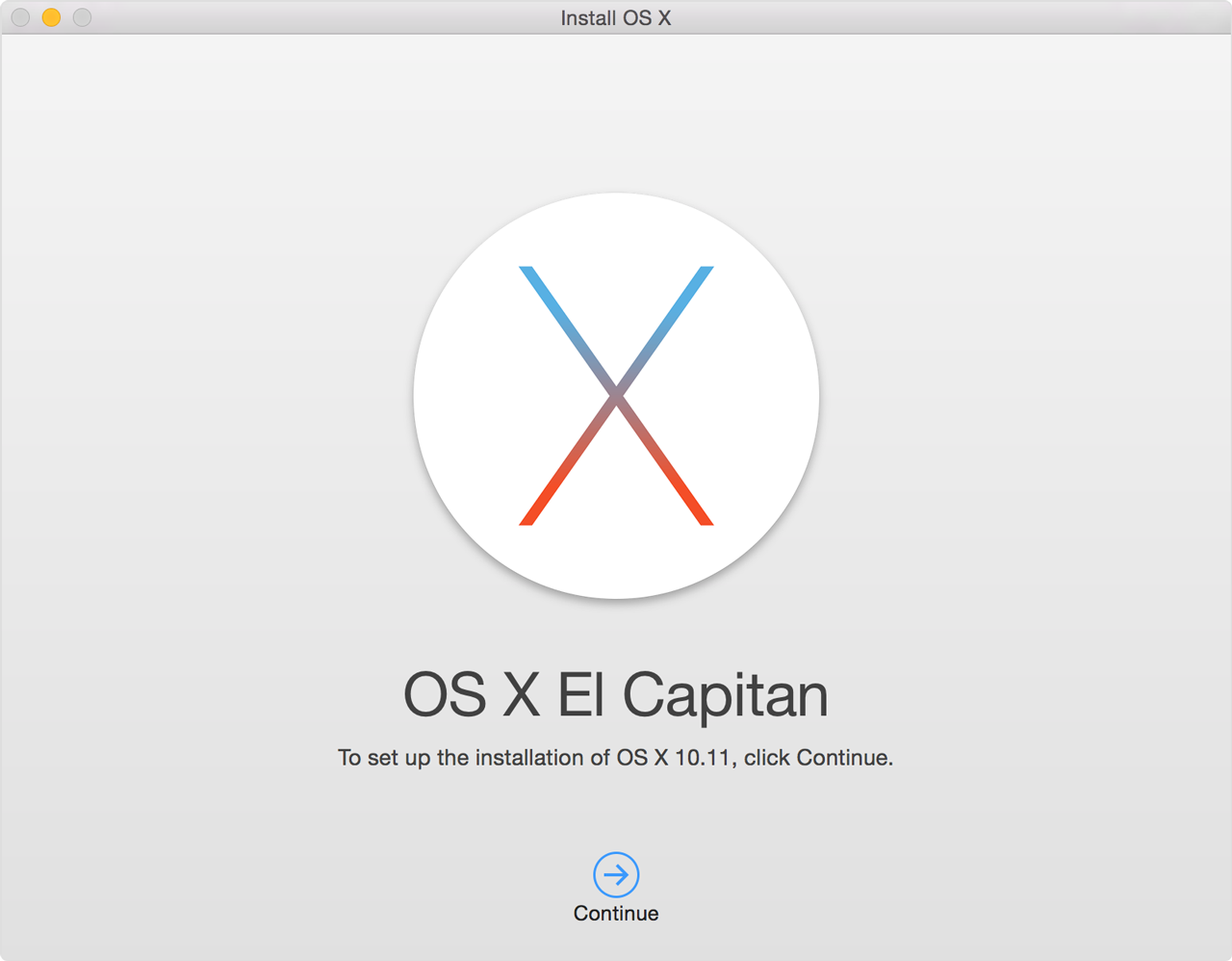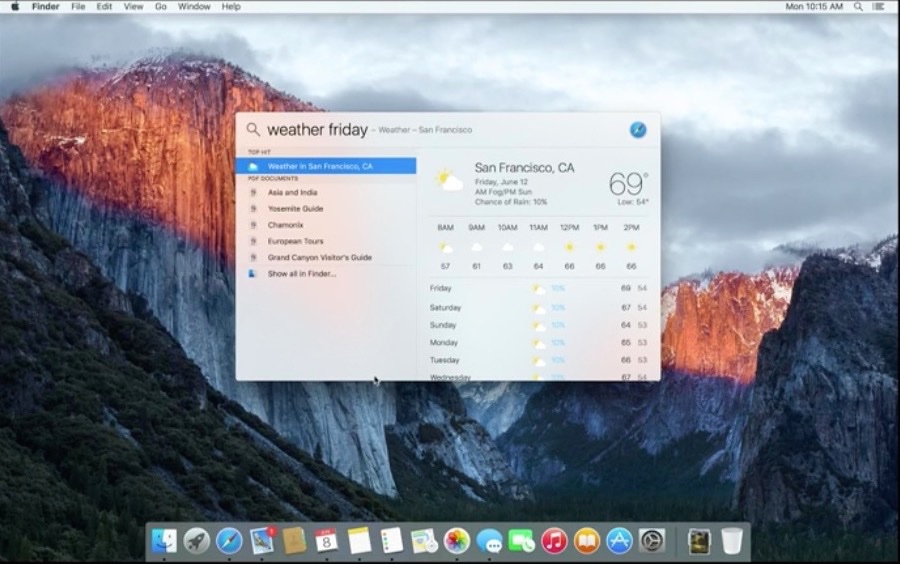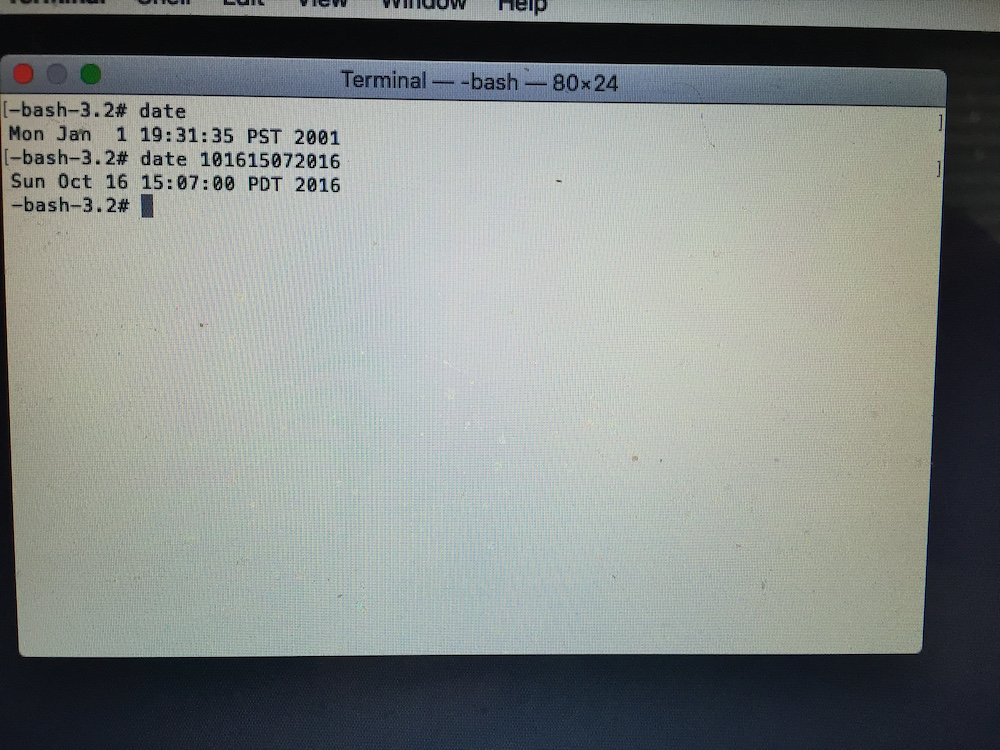Installing El Capiton on an old Mac Book Pro today, I received the error: OS X could not be installed on your computer. No packages were eligible for install. Contact the software manufacturer for assistance. Quit the installer to restart your computer and try again. Go to the Applications folder. Open the program called “Install OS X El Capitan”. Follow the on-screen instructions. If this program is missing or will not run, then move it to the trash and empty the trash, followed by re-downloading it from the App Store. An alternative approach is to create a dedicated installation drive from the El. Choose the hard disk type. Then, you clicked on the folder now in here, select the image file of Mac OS X El Capitan and click on the “Open” button. Select Mac OS X El Capitan ISO file. Within this step, you’re finished with the settings. Now is the time to make a digital machine to Mac OS X El Capitan. Consequently, you have to.
Upgrading to El Capitan
You can upgrade to El Capitan from Lion or directly from Snow Leopard. El Capitan can be downloaded from the Mac App Store for FREE.
Upgrading to El Capitan

To upgrade to El Capitan you must have Snow Leopard 10.6.8 or Lion installed. Download El Capitan from the App Store. Sign in using your Apple ID. El Capitan is free. The file is quite large, over 5 GBs, so allow some time to download. It would be preferable to use Ethernet because it is nearly four times faster than wireless.
This article explains how to install Windows 10 on an old MacBook running El Capitan. Apple made sure to make our lives difficult but installation is still doable. Download the Windows 10.iso file from your preferred location (MSDN, torrentz etc) and place the.iso file on the desktop. Insert a USB drive in one of the Mac’s ports.
Macs that can be upgraded to OS X El Capitan
1. iMac (Mid 2007 or newer) - Model Identifier 7,1 or later
2. MacBook (Late 2008 Aluminum, or Early 2009 or newer) - Model Identifier 5,1 or later
3. MacBook Pro (Mid/Late 2007 or newer) - Model Identifier 3,1 or later

4. MacBook Air (Late 2008 or newer) - Model Identifier 2,1 or later
5. Mac mini (Early 2009 or newer) - Model Identifier 3,1 or later
6. Mac Pro (Early 2008 or newer) - Model Identifier 3,1 or later
7. Xserve (Early 2009) - Model Identifier 3,1 or later
To find the model identifier open System Profiler in the Utilities folder. It's displayed in the panel on the right.
Are my applications compatible?

See App Compatibility Table - RoaringApps
Note that upgrading to El Capitan is quite possible from Snow Leopard.l Please be sure your model is included in the above and that your computer meets the installation requirements.
If you need to reinstall El Capitan then try:
Reinstall El Capitan Without Erasing the Drive
Boot to the Recovery HD: Restart the computer and after the chime press and hold down the COMMAND and R keys until the menu screen appears. Nexus 2 dmg mac installer.
Repair the Hard Drive and Permissions: Upon startup select Disk Utility from the main menu. Repair the Hard Drive and Permissions as follows.
When the recovery menu appears select Disk Utility and press the Continue button. After Disk Utility loads select the indented Macintosh HD entry from the the left side list. Click on the First Aid button in the toolbar. Wait until the operation completes, then quit Disk Utility and return to the main menu.
Reinstall OS X: Select Reinstall OS X and click on the Continue button.
Note: You will need an active Internet connection. I suggest using Ethernet if possible because it is three times faster than wireless and more reliable.
If you cannot do the above, then you need to reinstall Snow Leopard and try again:
Reinstall OS X without erasing the drive
1. Repair the Hard Drive and Permissions
Boot from your Snow Leopard Installer disc. After the installer loads select your language and click on the Continue button. When the menu bar appears select Disk Utility from the Utilities menu. After DU loads select your hard drive entry (mfgr.'s ID and drive size) from the the left side list. In the DU status area you will see an entry for the S.M.A.R.T. status of the hard drive. If it does not say 'Verified' then the hard drive is failing or failed. (SMART status is not reported on external Firewire or USB drives.) If the drive is 'Verified' then select your OS X volume from the list on the left (sub-entry below the drive entry,) click on the First Aid tab, then click on the Repair Disk button. If DU reports any errors that have been fixed, then re-run Repair Disk until no errors are reported. If no errors are reported click on the Repair Permissions button. Wait until the operation completes, then quit DU and return to the installer.
If DU reports errors it cannot fix, then you will need Disk Warrior and/or Tech Tool Pro to repair the drive. If you don't have either of them or if neither of them can fix the drive, then you will need to reformat the drive and reinstall OS X.
2. Reinstall Snow Leopard
If the drive is OK then quit DU and return to the installer. Proceed with reinstalling OS X. Note that the Snow Leopard installer will not erase your drive or disturb your files. After installing a fresh copy of OS X the installer will move your Home folder, third-party applications, support items, and network preferences into the newly installed system.

Download and install Mac OS X 10.6.8 Update Combo v1.1.
Jan 19, 2016 2:20 PM
- No packages were eligible for install. This is what it looks like in the installer. Upon seeing this I went 'HUH?' Because the installation was from a thumb drive I'd used many times to install Mac OS X (El Capitan) successfully. The above image came from an attempt to install El Capitan. I just got the following message.
- Nov 12, 2019 I was repeatedly getting 'Could Not Be Installed on your computer no packages were eligible for install' using both the internet el capitan install and this USB install. Thank you MIKX using terminal date just got me going!!
- Oct 01, 2015 This entry was posted in Troubleshooting and tagged 10.11, El Capitan, OS X, OS X 10.11 on October 1, 2015 by Topher Kessler. Post navigation ← Reasons to both install and avoid OS X 10.11 El Capitan Fix package managers not working after installing El Capitan →.
El capitan no packages were eligible for install. Posted by 22 days ago. El capitan no packages were eligible for install. Im in recovery mode and i keep getting the same popup despite going to terminal and typing 'date ' which failed then 'date ' which also failed.
; Date: 2016-10-16 15:41Tags: Mac OS X
A key step for upgrading the disk on a MacBook Pro is to install a new operating system on the new drive, and then use Migration Assistant to copy over the old data. Depending on how you went about the work, installing Mac OS X on the new system may give you a message: OS X could not be installed on your computer. No packages were eligible for install.
This is what it looks like in the installer. Upon seeing this I went 'HUH?' because the installation was from a thumb drive I'd used many times to install Mac OS X (El Capitan) successfully.
The above image came from an attempt to install El Capitan. I just got the following message, macOS could not be installed on your computer, while trying to install macOS High Sierra.
In both cases there was the same cause. In the El Capitan case, as I say in the next paragraph, the hardware clock had reset to zero because it did not have a battery pack. In the High Sierra case, I had performed a hardware reset of the computer in an attempt to fix a bootup problem. I had found advice to disconnect the battery, the power supply, then hold down the power key for a few moments. In both cases the hardware clock had been reset to zero, and macOS refused to boot.
After some yahoogling (duckduckgoing) I came across a simple solution. This particular computer had been running with no battery, and therefore the hardware clock was reset to zero, and Mac OS X had a test against that condition.
We've discussed elsewhere the process to install Mac OS X onto a computer, and transfer information from an old drive. It's during that process when the above message appears. A couple steps prior is where you can take action to correct the problem.
At this step, click on Terminal .
Then change the operating system date.
When running this particular Terminal session, you are ROOT meaning you can change anything on the computer. Normally we type 'date' at the command line just to find out the current day/month/year/time. But, the date command can be used to change the time registered in the system clock.
El Capitan Cannot Be Installed On This Computer System
As I said above, for this particular computer the system clock had been reset to zero because the battery pack had been changed. In fact, the computer had run without a battery for many months because the old battery had gone bad.
As you see on the screen, the date had been January 1, 2001. I then changed the system date to the current time as of the writing of this posting.
El Capitan Cannot Be Installed On This Computer How To
To understand the second command, go to a terminal window and type 'man date'.
El Capitan Cannot Be Installed On This Computer Free
In the synopsis section you'll see this as an option for the 'date' command:
No Packages Were Eligible For Install Mac El Capitan Dock
That's a little obtuse, but further down the manpage is this key: Error failed building wheel for mysqlclient macos.
In other words, the date code for this purpose is month-day-hour-minutes-year . hence, that's what I entered and it changed the system date to match.
No Packages Were Eligible For Install Mac El Capitan
No Packages Were Eligible For Install Os X El Capitan
Afterward I closed the Terminal window and was able to successfully install Mac OS X on the computer.